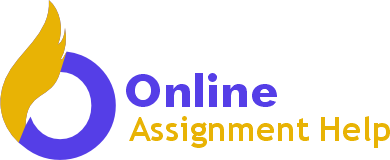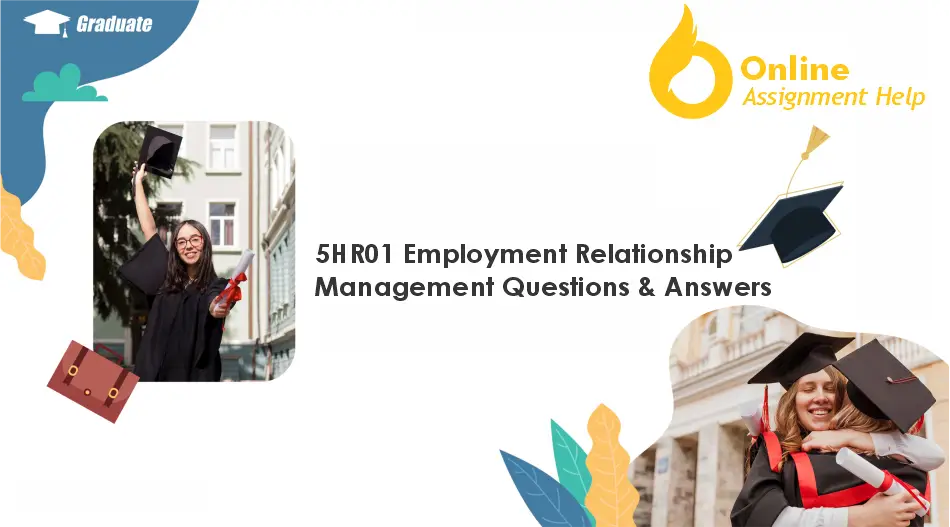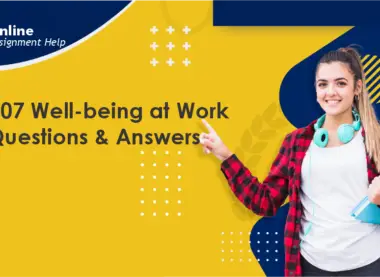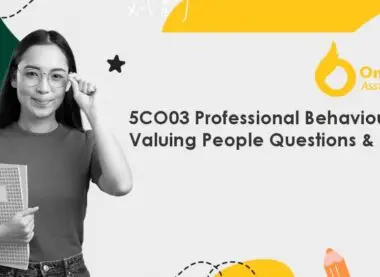Table of Contents
5HR01 Employment Relationship Management Questions
- Differentiate between employee involvement and employee participation and how they build relationships. (AC 1.1)
- Compare forms of union and non-union employee representation. (AC 1.2)
- Evaluate the relationship between employee voice and organisational performance. (AC 1.3)
- Explain the concept of better working lives and how this can be designed. (AC 1.4)
- Distinguish between organisational conflict and misbehaviour. (AC 2.1)
- Assess emerging trends in the types of conflict and industrial sanctions. (AC 2.2)
- Distinguish between third-party conciliation, mediation, and arbitration. (AC 2.3)
- Explain the principles of legislation relating to unfair dismissal in respect of capability and misconduct issues. (AC 3.1)
- Analyse three key causes of employee grievances. (AC 3.2)
- Advise on the importance of handling grievances effectively. (AC 3.3)
5HR01 Assignment Answers
AC1.1 Employee Involvement and Employee Participation: Definitions and Distinctions
In the context of a newly merged public sector organisation, where an influx of private sector leadership may impact traditional employee relations practices, understanding the nuances between employee involvement and participation is essential for fostering an inclusive and harmonious workplace.
Employee Involvement
Employee involvement represents practices and strategies integrating employees into the broader organisational framework, ensuring their active engagement and alignment with organisational objectives. Employees contribute to high-level discussions through involvement, while leaders remain responsible for final decision-making (Dundon and Wilkinson, 2021). For example, involvement is paramount in the newly merged organisation because the change in organisational leadership might create ambiguities among employees about commitment to existing employee relations practices. The tension may, therefore, be reduced by involving the employees in open forums, suggesting ways in which established practices may be maintained. Effective involvement generates commitment and ownership among the employees; hence, workplace harmony plays an important role in public sector organisations needing to integrate diverse cultural and procedural backgrounds (Gritti, 2022).
Employee Participation
In contrast, employee participation is a more formal and organised stream of activity in which employees exercise some influence over organisational decisions. The different employee participation policies, including joint consultative committees and staff councils, may amply help generate workplace harmony, particularly in the post-merger period (Simms, 2022). Participation solidifies the employees’ voice in decision-making related to operations and policy, promoting further cooperation. For example, establishing a special employee participation forum about concerns about the limited public sector experience of the new leadership could ensure that values specific to the public sector are respected and, as a result, increase employees’ sense of belonging and reduce conflict.
Building Relationships Through Involvement and Participation
Both approaches contribute to building trusting work relationships. Participation and involvement will facilitate the newly merged organisation to develop a supportive culture responsive to private and public sectors’ needs. This inclusivity is vital for public sector institutions, where employee satisfaction directly impacts service delivery. Discussing the organisation’s new direction with the employees involves them in the process and helps them feel that their contributions are still worth something. Participative structures provide stability and familiarity, often important features during transitions (CEPHUS, 2023).
AC1.2 Union and Non-Union Employee Representation: A Comparative Analysis
In light of a new, merged public sector organisation with limited leadership and management experience in the public sector, it would be important to understand the dynamics of union and non-union employee representations as a way of maintaining harmony. Both forms of representation provide a voice for employees; however, these vary in structure, objectives, and impact on workplace relationships.
Union Representation
Union representation refers to the organised structure of employee representation through which employees are represented by trade unions, which consequently work to defend workers’ rights, negotiate the terms of employment, and protect the employees from unfair treatment (Frege and Kelly, 2020). This channel mainly deals with a collective bargaining process in which representatives negotiate wages, benefits, and working conditions for employees with management. In this new merged public organisation, union representation can play a stabilising role in terms of continuity in employee relations practices. Since the new leadership comes from the private sector, unions can also steer management on understanding needs peculiar to the public sector and fight to retain traditional policies, which would help make it easier for staff who may be wary about their future under new leadership. Budd and Bhave (2019) said that most unionised environments provide more formalised procedures, thus making employee relations more stable and transparent.
Non-Union Representation
On the other hand, non-union representation is provided through mechanisms such as staff councils, joint consultative committees, and employee forums without formal union involvement (Frege and Kelly, 2020). These forms can offer greater flexibility, often adapting more easily to organisational evolution than union structures. In light of our scenario, a non-union staff council would facilitate open communications between the employees and the new leadership team, allowing the staff to have their voices heard in organisational decisions and build trust in its new management. Non-union mechanisms are also beneficial because they often allow for faster and less formalised means of communication, which could help speed up the adaptation to the changes a merger brings.
Comparing the Impact of Representation on Workplace Harmony
Although union representation is more formal and structured, providing strong legal support for employee rights, non-union representation allows greater flexibility and inclusiveness since it encompasses all employees, regardless of their union status. Therefore, using both forms of representation in the post-merger context could help respond to the various needs of employees by creating an appropriate balance in approach to employee voice and reinforcing workplace harmony (Adisa et al., 2023).
AC1.3 Employee Voice and Organisational Performance
The employee’s voice becomes imperative in our particular context of a merger within a public sector organisation, where a new leadership might be less informed regarding the dynamics of the public sector. Employee voice refers to channels and opportunities for employees to state opinions, concerns, and suggestions; it enhances organisational performance by increasing engagement, satisfaction, and adaptability (Kalfa and Budd, 2020).
Enhancing Employee Commitment and Engagement
When employees’ voices are heard, they become more engaged and committed, and performance generally benefits (Knies and Steijn, 2021). In this case, establishing mechanisms of employee voice, such as regular feedback forums or suggestion channels, would help in trust building since staff may be skeptical of changes brought forth by leadership with private sector influences. Generally, a well-engaged employee tends to be more productive with less absenteeism from work, which are performance measures in the public sector since service quality directly impacts the public (Wilkinson et al., 2020). Encouraging employee voice can reinforce the importance of continuity in public sector values, which the new leadership may overlook without input from experienced public sector employees.
Supporting Change Management and Innovation
Employee voice also enhances organisational performance by facilitating change management and promoting innovation. This is because, in providing a clear avenue for voicing their concerns, employees are likely to support any change management initiative and suggest innovative solutions to certain problems. This is particularly relevant in a merger where combining the different organisational cultures can be complex. The new management could set up working groups that involve employees across departments, where inclusive spaces are guaranteed to discuss adjustments in light of operational practices. This approach aligns with Wilkinson et al. (2020), who argue that fostering employee voice during transitions can increase staff alignment with organisational goals, thus facilitating smoother, more effective change processes.
Building a Positive Organisational Culture
Encouraging employee voice also makes organisational culture more transparent and fosters mutual respect, which is necessary to maintain morale and stability during a merger. If employees do not get opportunities for voice, they might feel that their inputs are valued less, thus leading to disengagement and, ultimately, turnover, which decreases performance factors. Research has shown that organisations valuing employee voice tend to have better workplace harmony and increased retention, directly boosting service quality and improving operational efficiency (Dundon and Wilkinson, 2021). The employee voice culture for the newly merged public sector organisation will assure employees that their expertise is valued, reduce resistance, and promote a smoother cultural integration.
AC1.4 Better Working Lives: Concept and Design
The concept of a “better-working life” denotes employee-oriented working styles, ensuring well-being and satisfaction, with the right work-life balance to achieve greater productivity and job satisfaction (Pipera and Fragouli, 2021). The need for better working lives is even more eminent in a public sector organisation in the wake of a merger when new leadership and organisational configurations have pressures of change. For instance, introducing new leaders from the private sector can mean introducing new expectations that may impact employee well-being if not managed sensitively. By designing supportive work practices, the organisation can navigate these changes effectively while fostering a positive, balanced working environment for staff.
Designing a Supportive Work Environment
Better work lives are designed by providing meaningful work, opportunities for growth, and a supportive culture. It can be achieved by infusing flexibility in work arrangements, having clear career development routes, and maintaining a just workload distribution (Guest, 2024). The newly merged organisation could implement flexible working hours or the possibility of working remotely to simplify the management’s adaptation to a new approach for the employees and reduce the stress connected with restructuring. Also, establishing career development programs or mentoring experienced employees of the public sector could help the new team learn about the values of the public sector and provide employees with the feeling of growth within the organisation. This approach is also highlighted by Kalleberg (2020), who states that a supportive work environment results in a higher quality of work and performance.
Encouraging Employee Autonomy and Engagement
Another aspect of designing better working lives is to afford employees some level of autonomy to make valuable contributions to decisions within the organisation. This is especially important to public sector employees who have adopted certain practices and values and may feel alienated by new leadership without opportunities to voice, among other things, concerns or suggestions. The transition process should be sensitive to the existing practices but enable the participation of staff and feedback mechanisms that would regularly engage them in decision-making about their role within this new framework. According to Chiva and Guinot (2021), autonomy and participation are foundational to creating a satisfying work environment, which leads to increased employee engagement and well-being.
Building a Culture of Well-Being
A holistic approach to better working lives is also about creating a workplace culture valuing well-being through wellness programs, mental health resources, and supportive management, demonstrating respect for personal and professional employee needs (CIPD, 2020). In this scenario, creating a well-being initiative could alleviate merger-related anxieties and signal the organisation’s commitment to staff welfare, helping to establish trust with the new leadership team.
AC 2.1 Distinguishing Organisational Conflict and Misbehaviour
Organisational Conflict
Organisational conflict is any disagreement or tension resulting from various differences in values, goals, or perspectives between different individuals or groups within an organisation (Rahim, 2023). In the case of this merged organisation, conflict may arise as employees adjust to new management styles and priorities from the private sector, which may not align with established public sector values. For example, some may believe that the new management does not respect long-established policies and rules, which creates unrest and opposition. Conflict, although at times abrasive, is not necessarily destructive. Conflict provokes communication that may lead to new ideas and better ways when addressed constructively. According to Adamovic (2021), constructive handling of organisational conflict encourages creative problem-solving, enhancing organisational learning and strengthening relationships.
Organisational Misbehaviour
In contrast, organisational misbehaviour involves actions that deviate from established norms, rules, or expectations and often seek to challenge or subvert organisational control (Ackroyd and Thompson, 2022). Misbehaviour may manifest in various forms, including absenteeism, indiscipline, or deliberate disobedience. In the newly merged organisation, some individuals could misbehave if they feel marginalised by new leadership or if their concerns are being dismissed. Misbehaviour, unlike conflict, often signals underlying dissatisfaction that may not be voiced openly. While the most common approach in dealing with misbehaviour is the use of disciplinary measures, understanding the root causes could range from low morale to lack of trust, which is equally important for effective resolution.
Managing Conflict and Misbehaviour
While conflict can be channelled into improving organisational performance, misbehaviour destroys productivity and morale. The differentiation between the two is important herein to help the leadership team understand integration challenges and then act appropriately to the concerns of staff about creating a positive workplace culture.
AC 2.2 Emerging Trends in Conflict and Industrial Sanctions
New Types of Workplace Conflict
While the sources of conflict traditionally have been related to disputes over wages, hours, and conditions, organisations are increasingly challenged with more complex issues. Conflicts arise increasingly based on differences related to values, often connected with diversity, ethics, and social responsibility (De Prins et al., 2020). Here, employees who are socialised into traditional public sector values conflict with private sector leaders who may have different priorities and ways of operating. Value-related conflicts, such as those against commitment to public welfare versus efficiency or profit, are more difficult to resolve than task-related conflicts because most of them usually involve deeply held convictions.
Moreover, digital communication channels have introduced new avenues of conflict. Employees may use online forums or social media to voice concerns publicly, potentially sparking wider tensions within and outside the organisation (Walker, 2021). Online debates regarding organisational changes could quickly escalate if employees feel that they are not being listened to within the context of the merger, further complicating the dynamics of conflict management.
Industrial Sanctions: Evolving Forms and Application
Industrial sanctions are also adjusting to the new nature of the workplace: traditional sanctions—strikes, for example—continue to be used, but “soft sanctions,” such as working-to-rule and social media campaigns, are gaining ground. Work-to-rule industrial actions have become common where employees, particularly in the public sector, strictly adhere to their job description and refuse additional tasks (Olsen and Van Buren III, 2024). This is particularly true at the organisation in the scenario where employees feel encroachment of their job’s boundaries by a new management.
Sanctions based on social media have also emerged, and in those, employees or unions use social media as a tool to attract public support and compel employers (Rogers, 2019). Employees could use social media to show how an issue of concern or one that does not align with public sector values at the newly merged organisation builds the case for public sentiment to support their cause. This indicates the rising power of public perception and community support as a tool to change organisational decisions.
Implications for the Merged Organization
New trends in conflict and industrial sanctions indicate that proactive and flexible approaches by management will be called for in this newly merged public sector organisation. The leadership can foster a resilient organisational culture by acknowledging and resolving sources of value-based conflicts and the potential impact of digital activism. Understanding these trends allows the organisation to respond sensitively to employee concerns and maintain workplace harmony during times of significant transition.
AC 2.3 Distinguishing Between Conciliation, Mediation, and Arbitration
Third-party intervention through conciliation, mediation, and arbitration offers structured approaches to resolve disputes in workplace conflict resolution. It is necessary for a recently merged public sector organisation, where the incoming leaders are unfamiliar with public sector employee relations, to understand such methods for constructively managing potential conflicts and maintaining employee relations.
Third-Party Conciliation
Conciliation is a process in which disputing parties contact a neutral third party who assists them in negotiating a settlement but does not impose a decision (Collins, 2023). The conciliator encourages communication, underlining areas of potential agreement without dictating a result. In this scenario, conciliation could help bridge differences between employees and new leaders who may lack experience managing public sector relationships. For example, if employees felt that their concerns over changes in work practices were being disregarded, a conciliator could facilitate discussions to clear misunderstandings and respect each other’s positions. Conciliation is widely practised in the UK through services such as ACAS (Advisory, Conciliation and Arbitration Service) to prevent workplace grievances from escalating into formal complaints (ACAS, 2020).
Mediation
Mediation, like conciliation, generally involves a third-party neutral mediator working with the disputing parties to help them discuss their dispute; however, mediation tends to be more formal, emphasising the principle of voluntary decision-making. Whereas during conciliation, the conciliator might go as far as to propose solutions, mediators usually avoid giving advice but rather facilitate discussion and exploration by the disputants themselves (Goldberg, 2020). For the merged organisation with private sector management, mediation may address interpersonal conflicts caused by the clash of expectations, such as work style or how teams should relate. The mediator’s role is to provide a safe space for both sides to raise concerns, allowing participants to work together toward a solution. Mediation is particularly beneficial for restoring working relationships, essential in the public sector, where sustained collaboration is key.
Arbitration
Unlike conciliation and mediation, arbitration ends with a binding decision by the arbitrator on the merit of each party’s position. Arbitration is similar to a court procedure: the arbitrator reviews the evidence before him and imposes a solution to the problem at hand (Goldberg, 2020). In this case, arbitration would be suitable for the organisation when less forceful methods have not succeeded, and an official formal decision is necessary between the union and management, such as disagreement over contract matters or complaints over wages. The binding nature of the arbitration provides clarity regarding an outcome, but it probably does not provide the same long-term relationship-building that conciliation or mediation might.
AC3.1 Principles of Legislation Relating to Unfair Dismissal: Capability and Misconduct
Legislative principles on unfair dismissal and employee relations become very important in the case of a recently merged public sector organisation. Considering that it is a case of merger and management does not have prior experience in the public sector, it becomes all the more pertinent to understand the legislative framework regarding the conditions of unfair dismissal due to capability as well as misconduct issues so that the employees are dealt with within the legal and fair parameters.
Unfair Dismissal: Legal Foundations
Under the Employment Rights Act 1996 (ERA), employees cannot be unfairly dismissed after two years of continuous employment (Waddington, 2020). Any dismissal is only fair if it is based upon legitimate grounds and a fair procedure leading up to it. Practical grounds for dismissal include capability, which is where the employee cannot carry out the required duties of their job, and misconduct, which occurs when standards of acceptable behaviour have been breached. The merged organisation, with its diverse manpower and probable conflicts, has to ensure that dismissals are strictly on legal grounds to avoid any claim of unfair dismissals.
Capability Issues
Capability-related dismissals arise when employees cannot perform their roles due to a lack of skill, qualifications, or health issues. To lawfully dismiss on these grounds, the employer must provide evidence of performance issues, offer support such as training, and allow sufficient time for improvement (CIPD, 2022). For example, someone who has been in the public sector for a long period would feel challenged by the new practices imposed by management from the private sector. If they were dismissed and were not given adequate support and time to prove that their performance could improve, they could claim unfair dismissal. Employers must prove that they have considered reasonable adjustments where incapacity due to health factors is an issue and the minimum legal requirement for fairness and due diligence must be met.
Misconduct Issues
Insubordination, theft, or harassment would constitute misconduct(Reddy, 2021). Dismissal based on this ground should be based on a well-articulated disciplinary action, which may involve an investigation, a written notice of allegations, and the opportunity of the employee to respond. In a newly merged organisation, there may be issues relating to misconduct due to different cultural expectations. If an employee breaches new policies due to unclear communication, immediate dismissal could be deemed unfair. Employers must follow disciplinary procedures and consistently apply their standards to avoid claims of unfair dismissal.
AC3.2 Key Causes of Employee Grievances
Inequitable Treatment and Lack of Fairness
One of the most frequent causes of employee grievances is perceived inequity, where people feel they are not being equitably treated compared to others (Laundon et al., 2019). This can involve promotional issues, rewards, or distribution of workload. If the employees feel that there is favouritism to the newcomers from the private sector after the merger or if there is perceived partiality in the recognition or distribution of workload, then disgruntlement will arise. Research has proved that workers who feel injustice in treatment become less engaged and file more grievances, so transparency of policies and consistent application of standards in the workplace go a long way to reducing grievances relating to inequity (CIPD, 2022).
Poor Communication and Management Practices
Effective communication is the backbone of expectation management and misunderstanding avoidance (Jerab, 2024). Since these are new leaders who have not been part of the culture of the public sector, the communication hiatus, especially on issues that touch on organisational change and policy changes. Should these new policies be rushed without consultations or proper explanations, employees might feel they are taken for granted or marginalised, leading to grievances. Research has documented that unclarified information by management leads to dissatisfaction, resulting in grievances (Bulger et al., 2020). It is thus important to ensure that regular channels of communication and feedback are established as ways to enhance understanding and reduce conflict in the merged organisation.
Unclear Job Roles and Expectations
Ambiguity in roles and responsibilities is another source of grievances, particularly during periods of organisational change. Employees confused by their responsibilities or who suffer sudden job responsibility changes can experience stress and frustration, especially if the emerging expectations appear incongruent with their experience or training. For instance, in the case of the merged public sector organisation, long-standing employees may experience particular difficulty with newly adopted performance metrics or reporting lines instigated by the private-sector managers. Such issues might be mitigated by clear, well-defined job descriptions and periodic performance reviews that would help employees adapt better to the expectations now faced (Armstrong and Taylor, 2023).
AC3.3
Importance of Handling Grievances Effectively
Effective grievance handling is an important ingredient in any organisation for maintaining a positive and productive work environment, even more so for public sector organisations undergoing major transitions. In a workplace where new leadership teams, largely from the private sector, are assuming lead roles, careful grievance handling will help avoid misunderstandings, improve employee satisfaction, and build trust in management. Addressing grievances promptly and fairly can also help the organisation meet its legal obligations and mitigate potential risks associated with unresolved disputes.
Maintaining Employee Morale and Trust
Addressing complaints efficiently allows the employees to feel that their concerns and issues are valued and considered. This is significant in the present context, where the merger has disrupted the habits and generated anxiety over organisational changes. If employees perceive that the management is responsive and transparent, then they are more likely to put trust in and stay engaged with their work, even during transitions (Neall et al., 2021). On the other hand, unprocessed complaints may result in dissatisfaction, absenteeism, and higher turnover rates. Through grievance management, the organisation shows its employees that they are valued and taken care of, thus creating a harmonious and motivated workgroup.
Preventing Escalation and Legal Risks
Timely grievance handling helps to resolve issues before they escalate into larger conflicts or formal disputes, which may reduce legal risks. According to the UK’s Employment Rights Act 1996, employers must be sure that they treat their employees fairly, which extends to having grievance procedures performed fairly and consistently. Failure to handle or address grievances may result in tribunal claims, particularly in those cases where the issues of fairness and transparency are under specific scrutiny by outside parties or within the public sector environment. Suppose employees feel their grievances on the new management policies have been ignored, for example. In that case, they may take it to court, which has its financial costs related to reputational damages. These risks can be mitigated using structured grievance procedures aligned with ACAS guidelines, indicating a commitment to fairness (ACAS, 2020).
Enhancing Organizational Culture and Employee Relations
Effective grievance handling also helps nurture a positive organisational culture and improves employee relations. In situations where some private sector leaders might be less familiar with public sector dynamics, active grievance handling will build respect between employees and management. Open lines of communication and responding to employee grievances hint at the organisation’s care for employee welfare, which also strengthens the organisation’s culture and develops harmony. It is revealed in a research study that such a culture, where grievances are dealt with transparently, retains more talent and also receives higher levels of productivity (Armstrong and Taylor, 2023).
Encouraging Continuous Improvement
Finally, grievances offer possibilities for organisational learning and improvement. Reviewing grievances can highlight recurring issues or gaps in management practices, offering insights for refining policies or training. In this newly merged organisation, for example, regular grievances reviews may identify how employees are adapting to new policies or specific misunderstandings that keep occurring. A proactive management approach this way will enable it to make necessary responses and engage in a culture of continuous improvement.
References
ACAS, 2020. ACAS Guide to Conciliation.
Ackroyd, S. and Thompson, P., sational Misbehaviour, SAGE, 2022, 322 pages. SOMMAIRE N 30–SEPTEMBRE 2023, p.201.
Adamovic, M., 2021. The vicious cycle of unfairness and conflict in teams. International Journal of Conflict Management, 32(1), pp.126-157.
Adisa, T.A., Mordi, C. and Oruh, E. eds., 2023. Employee Voice in the Global North: Insights from Europe, North America and Australia. Springer Nature.
Armstrong, M. and Taylor, S., 2023. Armstrong’s Handbook of human resource management practice: A guide to the theory and practice of people management. Kogan Page Publishers.
Budd, J.W. and Bhave, D.P., 2019. The employment relationship: Key elements, alternative frames of reference, and implications for HRM. SAGE Handbook of Human Resource Management, 2nd edn. London: SAGE, pp.41-64.
Bulger, C.A., Schultz, D.P. and Schultz, S.E., 2020. Psychology and work today. Routledge.
CEPHUS, AD, 2023. THE RELATIONSHIP BETWEEN HUMAN RESOURCE MANAGEMENT PRACTICES AND FIRM PERFORMANCE.
Chiva, R. and Guinot, J., 2021. Well-being, Happiness, Satisfaction, Burnout and the Future of Work. In New Directions in the Future of Work (pp. 163-182). Emerald Publishing Limited.
CIPD, 2020. Health and Well-being at Work. Chartered Institute of Personnel and Development.
CIPD, 2022. Managing Conflict at Work. Chartered Institute of Personnel and Development.
CIPD, 2022. Managing Employee Capability. Chartered Institute of Personnel and Development.
Collins, T.A., 2023. Conflict and Conflict Resolution in the Workplace: The Cost of Neglect and Mismanagement (Doctoral dissertation, Nova Southeastern University).
De Prins, P., Stuer, D. and Gielens, T., 2020. Revitalising social dialogue in the workplace: The impact of a cooperative industrial relations climate and sustainable HR practices on reducing employee harm. The International Journal of Human Resource Management, 31(13), pp.1684-1704.
Dundon, T. and Wilkinson, A., 2021. Employee involvement and participation. Contemporary Human Resource Management: Text and Cases, p.345.
Frege, C. and Kelly, J., 2020. Theoretical perspectives on comparative employment relations. In Comparative employment relations in the global economy (pp. 9-28). Routledge.
Goldberg, S.B., Sander, F.E., Rogers, N.H. and Cole, S.R., 2020. Dispute resolution: Negotiation, mediation, arbitration, and other processes. Aspen Publishing.
Gritti, A., 2022. Employee voice and firm performance across European organisational contexts.
Guest, D.E., 2024. Strengthening links between HRM theories, HR practices and outcomes: A proposal to advance research on HRM and outcomes. Human Resource Management Journal.
Jerab, D., 2024. The Impact of Communication on Organisational Performance: A Comprehensive Analysis. Available at SSRN 4809789.
Kalfa, S. and Budd, J.W., 2020. The future of employee voice. In Handbook of research on employee voice (pp. 566-580). Edward Elgar Publishing.
Kalleberg, A.L., 2020. Protecting and rewarding workers in the 21st century. In Agenda For Social Justice (pp. 153-162). Policy Press.
Knies, E. and Steijn, B., 2021. Introduction to the research handbook on HRM in the public sector. In Research handbook on HRM in the public sector (pp. 1-12). Edward Elgar Publishing.
Laundon, M., McDonald, P. and Cathcart, A., 2019. Fairness in the workplace: Organisational justice and the employment relationship. In Elgar introduction to theories of human resources and employment relations (pp. 295-310). Edward Elgar Publishing.
Neall, A.M., Li, Y. and Tuckey, M.R., 2021. Organisational justice and workplace bullying: Lessons learned from externally referred complaints and investigations. Societies, 11(4), p.143.
Olsen, T.D. and Van Buren III, H.J., 2024. Agonistic Respect and the Ethics of Employment Relationships. Journal of Business Ethics, 193(2), pp.271-284.
Pipera, M. and Fragouli, E., 2021. Employee well-being, employee performance & positive mindset in a crisis. The Business & Management Review, 12(2), pp.1-15.
Rahim, M.A., 2023. Managing conflict in organisations. Routledge.
Reddy, Y.K., 2021. Fairness in Disciplinary Process: Misconduct and Disciplinary Enquiry. Issue 1 Int’l JL Mgmt. & Human., 4, p.1171.
Rogers, B., 2019. Social media and worker organising under US law. International Journal of Comparative Labour Law and Industrial Relations, 35(1).
Simms, M., 2022. Employment Relations, Unionisation and the Future of Human Resource Management. In The Emerald Handbook of Work, Workplaces and Disruptive Issues in HRM (pp. 29-47). Emerald Publishing Limited.
Waddington, J., 2020. Employment relations in the United Kingdom. In International and Comparative Employment Relations (pp. 20-48). Routledge.
Walker, M., 2021. Peer-to-peer online voice as emergent collective action. Journal of Industrial Relations, 63(5), pp.777-797.
Wilkinson, A., Dundon, T., Donaghey, J. and Freeman, R.B., 2020. Employee voice: bridging new terrains and disciplinary boundaries. In Handbook of research on employee voice (pp. 2-18). Edward Elgar Publishing.







